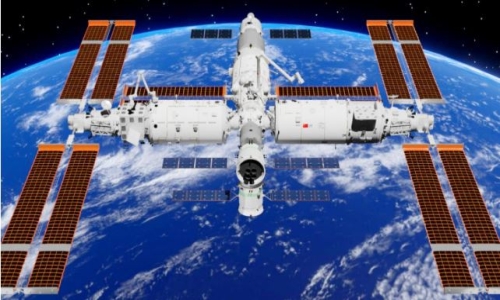


 11:20:38
11:20:38  2023-11-28
2023-11-28  1414
1414

Four gargantuan undersea sediment deposits – or 'megabeds' – discovered in the western Marsili Basin near Italy show evidence of a series of super eruptions stretching back some 50,000 years, suggesting another one could be on the way.
A team from Ohio State University in the US and the Institute of Marine Sciences (CSIC) in Spain found the megabeds through acoustic sampling surveys. They then took core samples from the seafloor to take a closer look.
While the area is known for its long-term volcanic activity, the researchers think these particular deposits were left by the Campanian Ignimbrite (CI) super eruption further to the north, a super eruption that transformed our planet's climate and ecosystems.
"This is the part of Italy, the Phlegrean Fields, where Mount Vesuvius is and it's still a very volcanically active area, so it's a known hazard and continuously monitored," Says geophysicist Derek Sawyer from Ohio State University.
"In doing marine geoscience studies like these, we're working to help understand past eruption events to aid in the effort to build resilient communities that have as much information as they can in order to avoid getting displaced."
Three of the megabeds consist of alternating layers of volcaniclastic sand and mud, the researchers found, while the fourth shows evidence of a denser volcaniclastic debris flow, all of which fits with the idea that a supereruption caused them.
The discovery of these megabeds gives geologists plenty of useful information about the impact of previous major volcanic events, and what might come next. More intense eruptions, which cause the denser flow of material, have a more immediate and short-term impact on the environment, for example.
In recent years, experts have become more concerned that the dormant volcanoes in this area – including a large underwater volcano about 175 kilometers (109 miles) to the south of Naples called Marsili – may be coming back to life, based on underground magma readings.
"We have to be cautious about these predictions, but in order to be prepared for it, more research is needed," says Sawyer.
From their megabed measurements, the researchers think they are created every 10,000 to 15,000 years. However, not every volcanic event produces a megabed.
In 2002, the eruption of the Mediterranean volcano Stromboli released a tsunami that formed a bed of material barely 10 centimeters thick. Just what might lead to the creation of megabeds tens of meters in thickness isn't clear.
While the Marsili Seamount is largely submerged under the Mediterranean, a modern day eruption would mean significant dangers from tsunamis and a number of ecological knock-on effects. The more prepared we are for it, the better.
"Megabeds are important components of deep-sea basins and are thought to be the result of major catastrophic events," says Sawyer. "So studying them can serve as an important archive into how these events affected the Earth."
Reality Of Islam |
|

Researchers

If you'

Imagine bei
 9:3:43
9:3:43
 2018-11-05
2018-11-05
10 benefits of Marriage in Islam
 7:5:22
7:5:22
 2019-04-08
2019-04-08
benefits of reciting surat yunus, hud &
 9:45:7
9:45:7
 2018-12-24
2018-12-24
advantages & disadvantages of divorce
 11:35:12
11:35:12
 2018-06-10
2018-06-10
 6:0:51
6:0:51
 2018-10-16
2018-10-16
 11:2:27
11:2:27
 2022-10-06
2022-10-06
 3:42:22
3:42:22
 2021-12-24
2021-12-24
 2:33:4
2:33:4
 2023-02-15
2023-02-15
 6:28:21
6:28:21
 2022-12-20
2022-12-20
 10:35:40
10:35:40
 2022-05-26
2022-05-26
 1:34:8
1:34:8
 2022-02-01
2022-02-01
 7:45:39
7:45:39
 2018-06-21
2018-06-21
 5:41:46
5:41:46
 2023-03-18
2023-03-18
| LATEST |